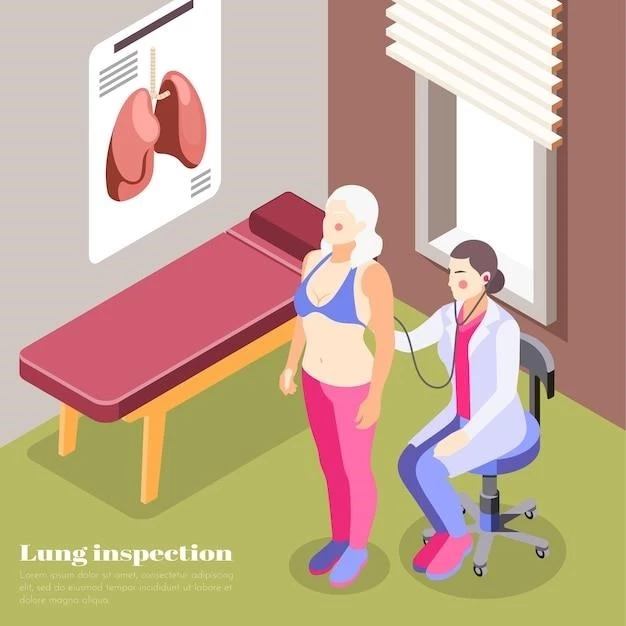Idiopathic Dilatation of the Pulmonary Artery
Idiopathic dilatation of the pulmonary artery is a rare disorder affecting the cardiovascular system. This condition involves the unknown cause of enlarged blood vessels near the heart. Learn more about the symptoms, diagnosis, and treatment options to manage this complex condition effectively.
Overview of Idiopathic Dilatation of the Pulmonary Artery
Idiopathic dilatation of the pulmonary artery is a rare cardiovascular condition characterized by an unknown cause of the enlarged blood vessels in the heart region. Patients may experience symptoms such as chest pain, shortness of breath, fatigue, and palpitations.
When diagnosed with idiopathic dilatation, it is vital to undergo specific diagnostic tests like echocardiograms, CT scans, and MRIs to confirm the condition’s presence and severity. Treatment options focus on managing symptoms and maintaining heart function.
Understanding the prognosis of idiopathic dilatation is crucial. While it is a rare disorder, with proper care and management, individuals can lead fulfilling lives. Hospitalization and specialized care may be necessary for severe cases to provide intensive monitoring and treatment. Research into this condition continues to explore potential future directions for improved therapies.
Symptoms and Diagnosis
Common symptoms of idiopathic dilatation of the pulmonary artery include chest pain, shortness of breath, fatigue, and palpitations. These signs may vary in severity and can impact daily life. If you experience any of these symptoms, seek medical evaluation promptly to determine the underlying cause.
Diagnostic tests are essential for identifying idiopathic dilatation. Your healthcare provider may perform echocardiograms, CT scans, MRIs, or catheter-based tests to evaluate the condition of the pulmonary artery and the heart’s function. These tests help in confirming the presence and extent of dilatation, guiding the treatment approach accordingly.
Early diagnosis is key to effectively managing idiopathic dilatation. By promptly addressing symptoms and undergoing necessary tests, you can work towards understanding the condition’s impact on your cardiovascular health. Collaborate closely with your healthcare team to develop a comprehensive care plan tailored to your specific needs and medical history.
Causes of Idiopathic Dilatation

Idiopathic dilatation of the pulmonary artery is characterized by an unknown cause of the enlargement of blood vessels near the heart. The term ‘idiopathic’ signifies that the underlying reason for the dilatation is uncertain or not clearly defined. Despite ongoing research in cardiology, the exact factors contributing to this condition remain elusive.
Individuals diagnosed with idiopathic dilatation may not have a specific identifiable cause, making it challenging to pinpoint the origin of the pulmonary artery’s enlargement. While certain risk factors or genetic predispositions could play a role in the development of cardiovascular conditions, the primary trigger for idiopathic dilatation remains undefined.
Given the complexity of idiopathic dilatation and its elusive etiology, healthcare providers focus on managing symptoms and maintaining heart health through tailored treatment plans. By addressing the symptoms associated with the dilatation and closely monitoring cardiovascular function, individuals can work towards leading a quality life despite the uncertainties surrounding its causes.
Treatment Options
Managing idiopathic dilatation of the pulmonary artery involves a comprehensive approach to address symptoms and maintain heart function. Treatment options may include medications to manage chest pain, reduce inflammation, or improve heart function. Your healthcare provider will determine the most suitable medications based on your individual needs and condition severity.
In some cases, surgical interventions like pulmonary artery angioplasty or stenting may be recommended to restore normal blood flow and alleviate symptoms. These procedures aim to address the dilatation directly and improve overall cardiovascular health. Surgical options are typically considered for individuals with severe idiopathic dilatation that does not respond adequately to conservative measures.
It is crucial to follow your healthcare provider’s guidance regarding treatment options and attend regular follow-up appointments to monitor your condition’s progress. Engaging in lifestyle modifications such as a heart-healthy diet, regular exercise, and stress management can help support your overall well-being alongside medical interventions. By actively participating in your treatment plan, you can optimize your health outcomes and enhance your quality of life despite facing challenges associated with idiopathic dilatation.
Managing Symptoms and Prognosis
Effectively managing symptoms of idiopathic dilatation of the pulmonary artery is essential for enhancing your quality of life. Adopting lifestyle modifications such as maintaining a heart-healthy diet, engaging in regular physical activity, and minimizing stress can help alleviate symptoms like chest pain, shortness of breath, and fatigue.
Your healthcare team will work with you to develop a personalized symptom management plan tailored to your specific needs. By staying compliant with medications, attending follow-up appointments, and monitoring your symptoms closely, you can optimize your overall well-being and function despite living with idiopathic dilatation.
Understanding the prognosis of idiopathic dilatation is crucial for long-term care planning; While this condition is rare and presents challenges, with proper management and medical guidance, individuals can lead fulfilling lives. By proactively managing symptoms and prioritizing heart health, you can navigate the complexities of idiopathic dilatation and strive for a positive outlook on your prognosis.
Hospitalization and Specialized Care
In cases where idiopathic dilatation of the pulmonary artery presents severe symptoms or complications, hospitalization may be necessary to provide specialized care and intensive monitoring. Hospital settings offer access to advanced diagnostic tests, round-the-clock medical supervision, and specialized treatment options tailored to your condition.
During hospitalization, your healthcare team will closely monitor your cardiovascular health, adjust medications as needed, and assess the response to treatment. Specialized care may involve collaboration with cardiac specialists, interventional cardiologists, and other healthcare providers to ensure comprehensive and coordinated management of idiopathic dilatation.
After discharge, continued follow-up appointments and adherence to your treatment plan are vital for maintaining heart health and managing symptoms effectively. Collaborate with your healthcare team to address any concerns, receive ongoing support, and optimize your recovery and long-term prognosis. Through access to specialized care and personalized treatment, you can navigate the complexities of idiopathic dilatation with confidence and resilience.
Research and Future Directions
Ongoing research into idiopathic dilatation of the pulmonary artery aims to enhance understanding of this rare disorder and explore innovative treatment approaches; Scientists and healthcare professionals continue to investigate the underlying mechanisms of the condition, potential genetic factors, and novel therapeutic strategies.
Future directions in the field of cardiology may lead to advancements in diagnostic methods, targeted medications, and minimally invasive procedures for managing idiopathic dilatation. Participating in clinical trials or research studies can contribute to the collective knowledge about this condition and pave the way for improved outcomes and quality of life for individuals affected by idiopathic dilatation.
Staying informed about the latest developments in research and collaborating with your healthcare team on potential research opportunities can offer insights into emerging treatment modalities and support innovation in the field. By actively engaging in discussions on research and future directions, you can play a role in shaping the landscape of care for idiopathic dilatation and advocating for enhanced resources and support for individuals living with this challenging cardiovascular condition.
